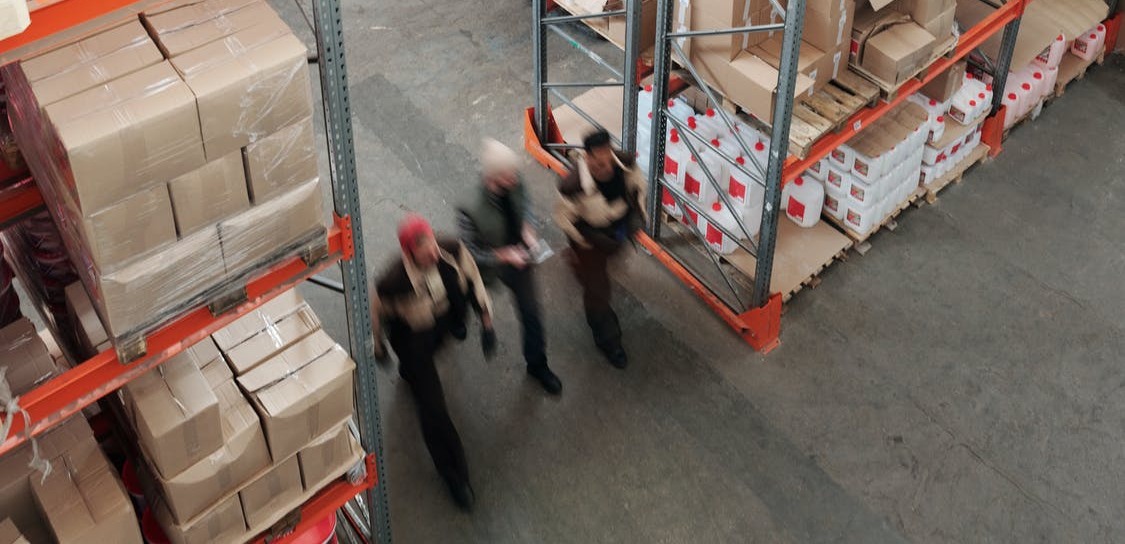It can be argued that the seeds of human distrust with artificial intelligence (AI) were planted in 1968. That’s right, I’m looking at you, HAL 9000 (aka HAL), from 2001: A Space Odyssey. What was supposed to be a harmonious future of AI working with and for humans on the spaceship Discover 1 turned into deception, conspiracy, and cold-blooded murder. Thanks to Dave Bowman, we survived our robot overlords while learning a valuable lesson about how truly dangerous AI can be.
At least, that’s what Hollywood and Stanley Kubrick taught us.
The lasting trauma from this film was only exacerbated by a litany of major motion pictures depicting AI as murderous cyborgs out to destroy their human creators. So, you can’t really fault today’s workforce for being a little wary of smart technology – especially when its existence impacts their jobs. Instead of taking our lives there’s the understandable fear of them taking our livelihoods. It’s art imitating life, imitating art, right? Yes, but it doesn’t have to be that way.
Today’s AI isn’t here to replace us; it’s here to help. For contact centers, it’s the chatbot helping customers in their time of need. For IT, sales, and marketing, it’s the platform helping decipher and deliver actionable data. In the case of supply chain, AI is the technology that will help humans mitigate, if not overcome, this era of constant disruption. But how do we keep that human element in this age of automation? And, given the tumult their team is constantly battling, what does that mean, specifically, for the human aspect of supply chain?
“…And I Want to Help You” – HAL
As if supply chain leaders don’t have enough on their plates vis a vis natural disasters, the pandemic, resource shortages, freight issues, and inflation (to name a few), there’s the ongoing concern about the human element: their own staff. To overcome these challenges and disruptions requires the lauded goal of “end-to-end supply chain visibility” which in turn, requires forecasting through actionable, single-source-of-truth data in real time and seamless operations across the supply chain. However, data analysts can only work so fast with the data they have and given the many stresses employees feel from being overworked while dealing with everything going on in the outside world, those in operations are prone to make mistakes. If this resonates with you and your organization, you can take some comfort in knowing that you’re far from alone. According to KPMG International, only 13% of those surveyed say they have complete visibility into the end-to-end supply chain, while 80% say responsive operations and supply chains are their organizations’ biggest priorities. So, how can organizations improve?
If you guessed AI/automation implementation, you are correct! But what does that entail, exactly, and what does it mean for current employees? Let’s begin by addressing the employee aspect. If there’s a concern about robots taking human jobs, it’s worth noting that, thanks in large part to the Great Resignation, a lot of the humans aren’t there to begin with. In short, automation and AI can fill those gaps. With regards to the data analysts who spend countless hours sifting through data, endlessly trying to find the right nuggets of information to help with forecasting, AI is there to help. According to CIO Insight, organizations can save time and money by allowing automation to assist with data analysis, supply chain forecasting, shipment tracking, and menial back-office tasks. This also alleviates any added stress for the human employees.
“I’m Sorry, Dave. I’m Afraid I Can’t Do That” – Also HAL
So, what does this all mean for the human aspect of supply chain in the future? Shouldn’t this trajectory propel us into a world where AI can do it all and humans are rendered useless? Allow me to answer that question with a few questions:
- How are those autonomous cars working out? Not well if you ask your local DMV or a anyone with a bike.
- Who writes the programming and algorithms that provide the “intelligence” for AI? People.
- Do you really think people want to exclude the human element after a pandemic forced them into isolation? According to Forbes, 86% of consumers prefer humans to chatbots.
These are all things that directly impact supply chain (and beyond), and are all proponents of the importance of humans. AI is limited by the people who implement it and the people who don’t necessarily want to interact with it. There are things that automation simply cannot do; things that require the human touch.
That’s right, humans in supply chain, you’ve read this correctly – our “robot overlords” merely want to help us rather than eliminate us. Because unlike Hollywood, this is what they’re programmed to do.
But we’d love to hear about your experiences with AI, be it fear, embrace, or indifference. Please let us know how AI and automation have influenced your organization in the comments!
GDS Summits are tailored 3-day virtual event conferences that bring together business leaders and solution providers to accelerate sales cycles, industry conversations and outcomes. Regarding the Supply Chain Insight Summits 82% of Delegates said the overall experience of Digital Summit they attended was either Above Average or Excellent and 75% of Solution Providers said they would be interested in sponsoring future events.
For more, click here to hear from attendees on how GDS has helped them to achieve their business outcomes.
Continue the debate at GDS’ Supply Chain Insight Summits where we bring together senior supply chain executives who are actively seeking to share, learn, engage, and find the best solutions.














